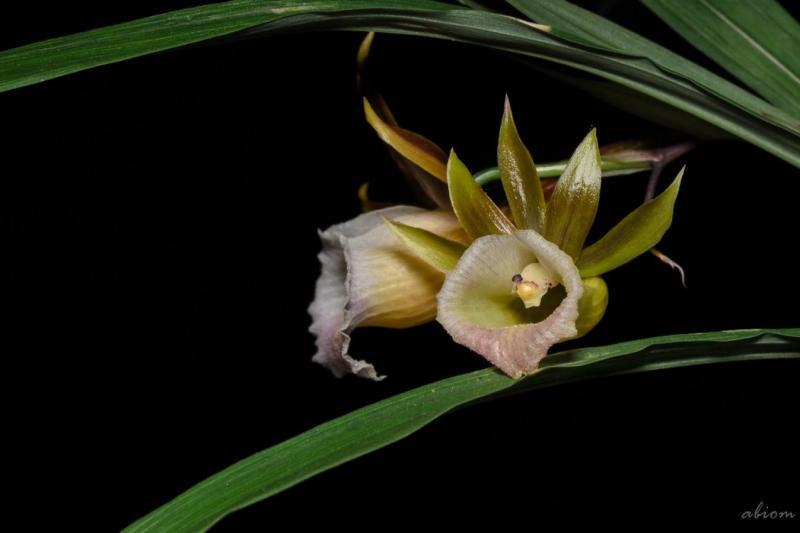Galeandra baueri
Also known as: Bauer's Galeandra or Galeandra baueri h.v. floribus luteis Galeandra funckiana Galeandra cristata Galeandra funckii in the subfamily: Epidendroideae
Native to: Peru
General Information
Bauer's Galeandra is a medium sized sympodial warm to hot growing epiphytic orchid belonging to the sub family Epidendroideae native to Peru. It is named after the Austrian Botanical Painter in the 19th century.
Plant Description
Sympodial. Grows to 40-50cm. Each new growth has numerous erect arching, lance shaped leaves that grow to 1.5-20cm long. Pseudobulbs grow to 19cm
Flowers
Numerous short lasting blossoms appear
Substrate(s)
- Coarse
- Bark
- Charcoal
- Treefern
- Spaghnum Moss
- Perlite
Care Notes
This orchid goes into a dormancy phase during winter, during this phase it is best not to provide water unless the plant is starting to look thirsty. The lack of water increases the chance of flowering in spring, and also reduces the likelihood of any rot forming. Do not resume watering until new growth has appeared and is growing strongly.
Often a period of intense growth occurs after dormancy. During this time the amount of light, water and fertiliser the plant receives will directly impact the amount of growth that occurs during this time, and in the case of seedlings, will reduce the time required to reach maturity.
It's recommended to heavily reduce the water amount at the middle to end of autumn to trigger dormancy. Leaves on older bulbs will begin to drop during this time while the newer bulbs continue to mature until terminal leaves appear at the tip of the pseudobulbs.
Repotting can be done any time of the year though it's best to do it in early spring when new growth is appearing as this also means new roots will appear to help the plant anchor into the new media and offset any damage to established roots during the repotting process.
Climate
Grows at low to high elevations. Rainfall ranges from 38mm to 330mm per day, heaviest in May and lightest in October. Temperature ranges from 14C to 28C, highest in September (17C to 28C) and lowest in July (14C to 23C).
Fertiliser
These plants thrive on fertiliser, especially during periods of growth. Liquid fertiliser can be applied at the recommended strength, augmented with manure pellets or other quickly degradable fertiliser, applied away from the base of the plant, during periods of strong growth that occurs in the middle of the growth season.
Do not fertilise during the dormant period. Avoid using slow release fertiliser that breaks down for longer than 3 months, if using apply only after dormancy when new shoots have developed noticably, applied 4-5 pellets per cup (250ml) of media.
They can benefit from a high phosphate fertiliser leading up to flowering season, and by a high nitrogen fertiliser when new growth appears.
Fertiliser can be applied heavily year round. Use a high Nitrogen fertiliser during Spring and Summer. Use a high Phosphorous fertiliser during Summer.Potting
These plants are quite forgiving and will do well repotted ever 2-3 years. The mix should be coarse, well draining, and allow space for air to move and for roots to grow.
Alternatively, these plants will also do well mounted to tree fern or cork slabs, or mounted to trees.
Best time for repotting or mounting the orchids is the end of winter when new growths start to appear. Avoid repotting during hot weather,
This plant does well mounted. Repotting is best done annually.




















